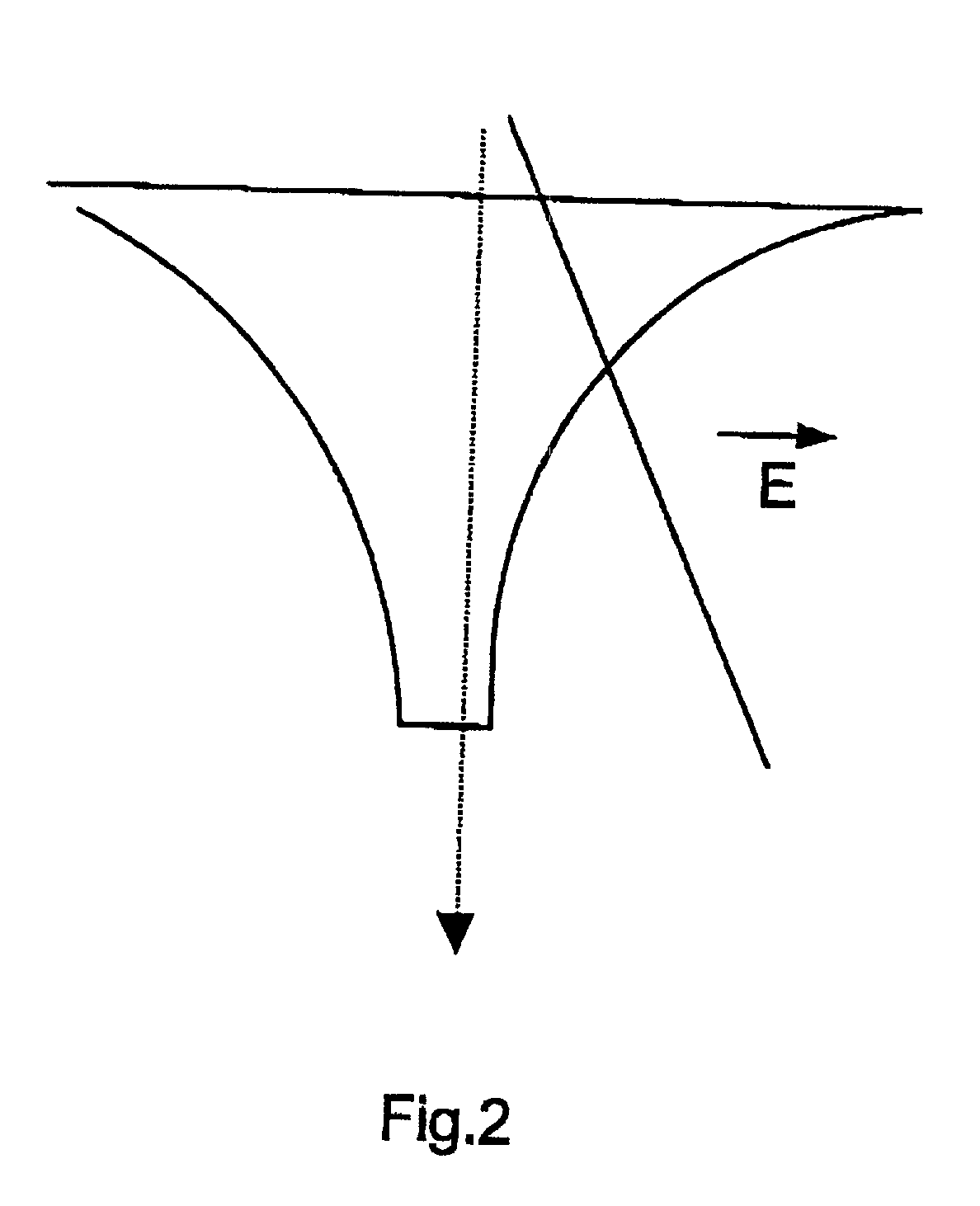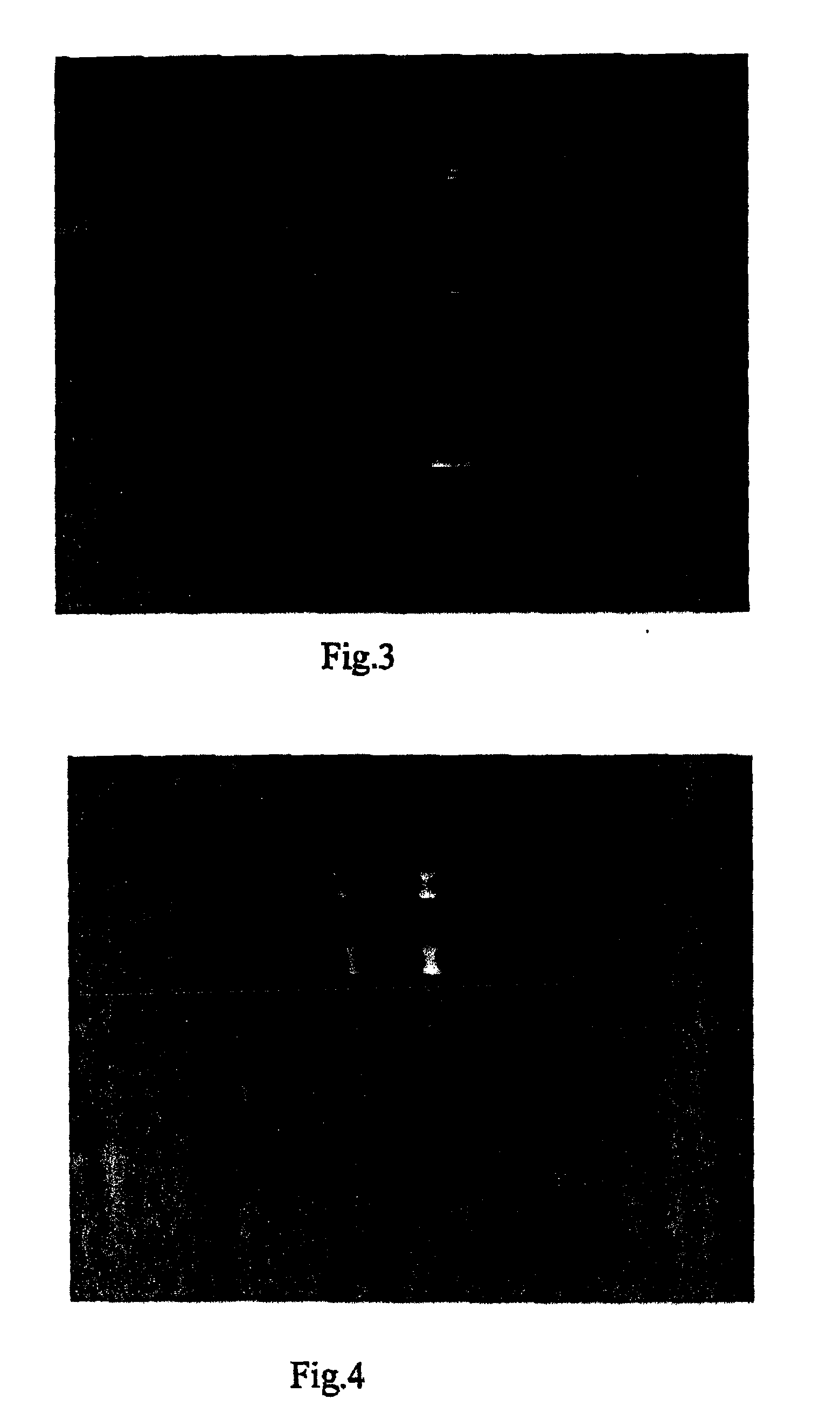Methods and apparatus for nonlinear mobility electrophoresis separation
a nonlinear mobility, electrophoresis technology, applied in the direction of liquid/fluent solid measurement, fluid pressure measurement, peptide, etc., can solve the problems of limited separation capability of types of molecules, molecular size and molecular properties, method disclosed,
- Summary
- Abstract
- Description
- Claims
- Application Information
AI Technical Summary
Problems solved by technology
Method used
Image
Examples
example 2
[0312] Fraction compression in a hyperbolic wedge at constant Potential
[0313] Two hyperbolic inserts from polymethyl acrilate are placed in the cell with the following characteristics: the length is 13 cm, the width is 10 cm. The insert dimensions vary according to a hyperbolic function with parameters such that the hyperbola narrows from 0 at one end to 4.4 cm at the other end. Agarose gel (0.6%) is poured into the volume between the inserts, creating a gel shaped as a hyperbolic wedge ("hyperwedge") with the length of 8.4 cm and the width of from 10 cm in the widest part to 1.2 cm in its narrow part. The wedge is covered by buffer solution of TAE (height 0.2 cm). The marker DNA lambda-phage is introduced into the start pockets, located at distance of 1.5 cm from the narrow edge. When a constant potential is applied a linearly decreasing field from the narrow to wide end of the hyperbolic wedge provides for focusing of the DNA fractions (see FIG. 25).
example 3
[0314] Nonlinear focusing in the hyperbolic wedge with time varying potential (MEANDER)
[0315] The hyperwedge, which is described in the Example 2, is used for nonlinear DNA focusing. In this Case a variable in time periodic signal of the bipolar pulse wave type (meander) is applied to the electrodes. The average over a period of the electric field is relatively small (less than 2V / cm), in comparison with a field amplitude during the period of the meander action (less than 20V / cm). The sample DNA is entered into the start pockets which are placed in the "narrow" end of the agarose gel (0.6%). Due to nonlinear focusing the more heavy fractions move to the direction of the wide gel end, while the light ones remain behind. With different parameters for the meander voltage the fractions can be made to move to the opposite direction from the start. This behavior differs sharply from all other, traditional methods of electrophoretic DNA separation where everything is determined by the rati...
example 4
[0316] Consider an electrophoretical cell, partitioned across by non-conductive dielectric walls. There is a hole with the diameter of 50 .mu.m in the wall. The wall divides the cell in to two cameras: right and left one. There is an electrode in each camera, to which a variable in time voltage (AC) is applied with zero average mean voltage. Both cameras near the holes filled with the electrolyte (buffer). A sample, containing a mixture of RBC and hybridoma, is placed into the camera. During the application of a periodic voltage with zero average on the electrodes of the cell, large gradients of the squared electrical field are observed near the hole. Therefore, a dipole power acts on the RBC, forcing them to drift to the area of the strong field. This phenomenon is demonstrated in FIG. 40.
[0317] RBC concentrate near the "hole" when a variable signal is applied. Symmetrical and asymmetrical (FIG. 12) signals were used.
[0318] Separately the nonlinear mobility of RBC was determined by...
PUM
| Property | Measurement | Unit |
|---|---|---|
| Time | aaaaa | aaaaa |
| Electric dipole moment | aaaaa | aaaaa |
| Time | aaaaa | aaaaa |
Abstract
Description
Claims
Application Information
 Login to View More
Login to View More - R&D
- Intellectual Property
- Life Sciences
- Materials
- Tech Scout
- Unparalleled Data Quality
- Higher Quality Content
- 60% Fewer Hallucinations
Browse by: Latest US Patents, China's latest patents, Technical Efficacy Thesaurus, Application Domain, Technology Topic, Popular Technical Reports.
© 2025 PatSnap. All rights reserved.Legal|Privacy policy|Modern Slavery Act Transparency Statement|Sitemap|About US| Contact US: help@patsnap.com



